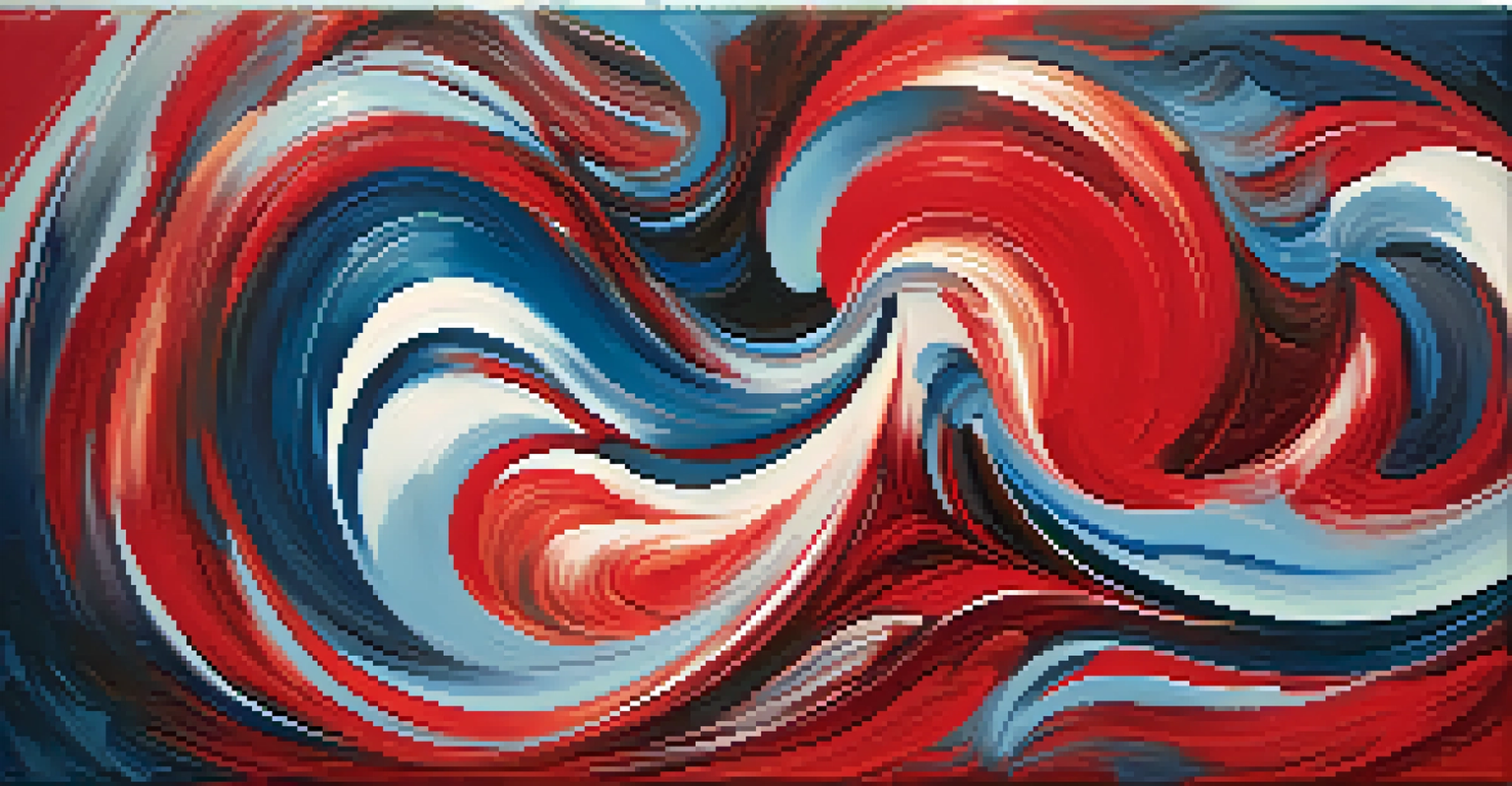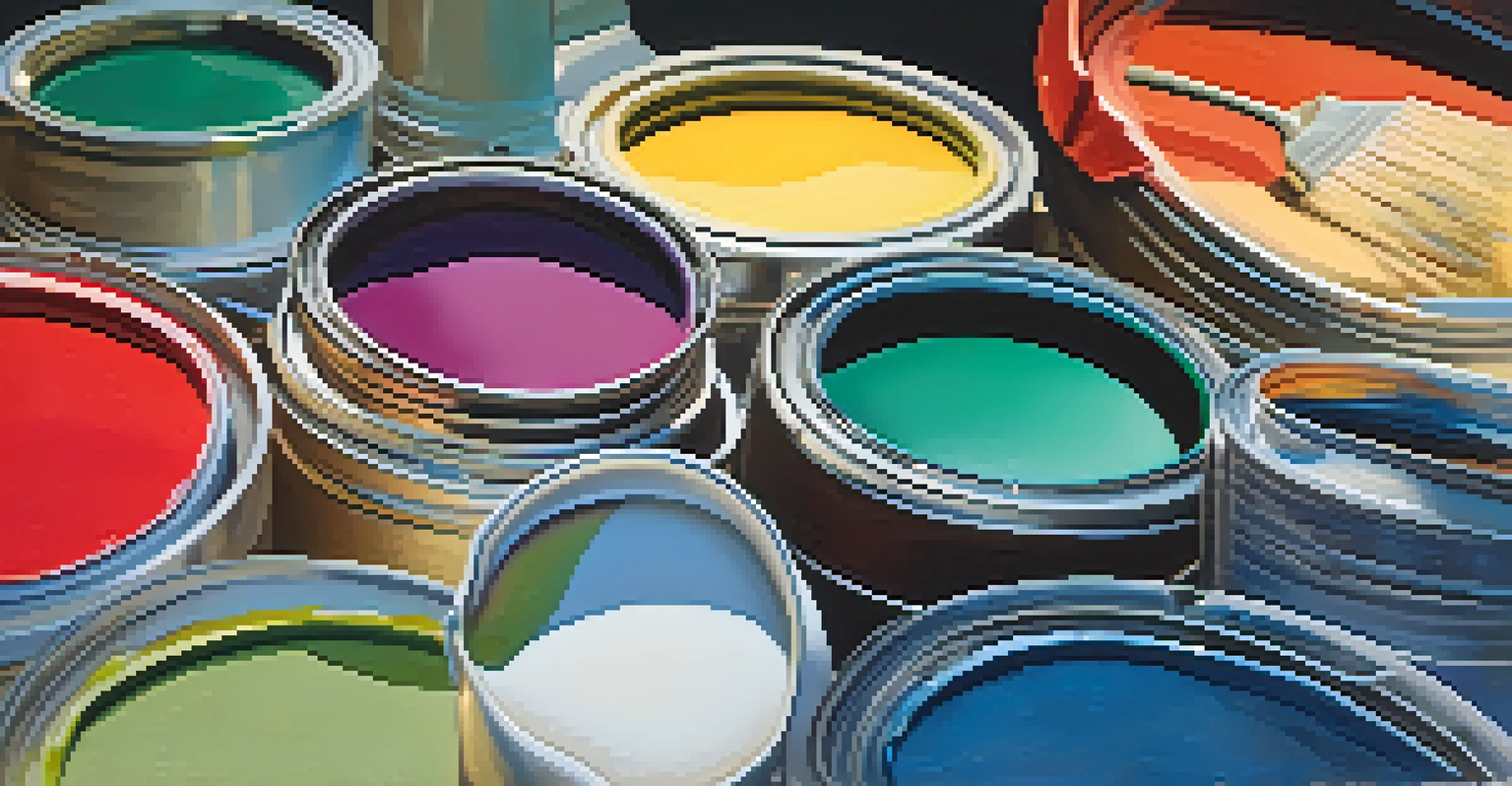How to Analyze Art: Techniques for Deeper Appreciation

Understanding the Elements of Art for Analysis
To truly appreciate a piece of art, it's essential to understand its basic elements. These include line, shape, color, texture, and space. Each element plays a crucial role in how the artwork communicates its message and evokes emotions.
Art is not what you see, but what you make others see.
For instance, consider how a bold, red line can convey energy and passion, while soft, curved shapes may evoke calmness and serenity. By dissecting these elements, you can start to see the artist's intentions more clearly.
Related Resource
As you examine each element, ask yourself how they interact with each other. This simple practice can unveil layers of meaning that you might have otherwise overlooked, enriching your overall appreciation.
Exploring the Context Behind the Artwork
Art doesn't exist in a vacuum; it's often a reflection of the time and culture in which it was created. Investigating the historical and social context can provide valuable insights into the motivations behind the piece. For example, understanding the political climate during the time of an artwork can illuminate its themes and messages.

Consider the works of artists like Picasso, whose paintings were heavily influenced by the tumultuous events of the early 20th century. Knowing these details allows you to engage with the artwork on a deeper level.
Understand Art's Basic Elements
Recognizing elements like line, shape, and color helps reveal the artist's intentions and enhances appreciation.
By exploring the context, you not only gain a richer understanding of the artwork but also the artist's perspective. This broader view can transform your experience from passive viewing to active engagement.
Emotional Response: Trust Your Instincts
When analyzing art, your emotional reaction is as significant as any technical assessment. Take a moment to reflect on how the piece makes you feel. Do you feel joy, sadness, confusion, or nostalgia? These emotional responses can offer valuable clues about the artwork's impact.
Every artist dips his brush in his own soul, and paints his own nature into his pictures.
For instance, a painting that evokes feelings of tranquility might use soft colors and gentle lines, while a chaotic composition could stir feelings of anxiety. Trusting your instincts can lead you to a more personal connection with the art.
Related Resource
Remember, art is subjective, and your individual interpretation is valid. Embracing your emotional response can deepen your appreciation and encourage a more meaningful dialogue with the artwork.
Technique and Style: Examining the Artist's Choices
Every artist has a unique style and technique that shapes their work. This could include their choice of medium, brushwork, or even the way they use light and shadow. By paying attention to these details, you gain insight into the artist's creative process.
For example, the thick, expressive brushstrokes of Van Gogh's paintings convey a sense of movement and emotion, while the smooth, precise lines of a Renaissance piece can reflect order and harmony. Analyzing these techniques can elevate your understanding of the art.
Explore Context for Deeper Insights
Investigating the historical and cultural context of artwork can illuminate its themes and deepen your engagement.
Additionally, understanding the common styles or movements in which the artist worked can provide context for their choices. This knowledge helps you appreciate not only the artwork itself but also its place in the broader art world.
Symbolism: Decoding Hidden Meanings
Many artists infuse their work with symbolism, using visual elements to convey deeper meanings. Recognizing these symbols can enrich your understanding of the artwork. For instance, a broken chain might symbolize freedom or liberation, while a skull could represent mortality.
To decode these symbols, consider the cultural and historical significance they may hold. Researching common motifs in art history can also help you identify recurring themes and their implications.
Related Resource
As you uncover these hidden meanings, you may find that the artwork resonates with you in unexpected ways. This exploration can turn a simple viewing into a profound experience, revealing the layers of thought and intention behind the creation.
Engaging with Different Perspectives: Art Critique
An essential part of art appreciation involves engaging with different perspectives. Reading critiques or discussing the artwork with others can offer fresh insights that you might not have considered. This dialogue can expand your understanding and appreciation of the piece.
For instance, an art critic might highlight aspects of a painting that align with current social issues, connecting the artwork to contemporary conversations. This can enhance your view of the art and its relevance today.
Trust Your Emotional Responses
Your feelings about a piece of art are valid and can lead to a more personal connection and understanding of the work.
Don't hesitate to share your thoughts and interpretations, too. Engaging in conversation about art can be incredibly rewarding, fostering a community of appreciation and understanding.
Taking Time: The Importance of Slowing Down
In our fast-paced world, we often rush through experiences, including viewing art. However, taking the time to slow down and really observe a piece can profoundly enhance your appreciation. Allow yourself the space to breathe and digest what you're seeing.
Spend a few minutes with a single artwork, noticing the details you might typically overlook. This could be the texture of the paint, the way light interacts with the surface, or even the subtle expressions of figures within the piece.

By slowing down, you're giving yourself permission to connect with the art on a deeper level. This mindful approach can transform your viewing experience, leading to revelations and insights that make the artwork more meaningful.
Integration: Putting It All Together
After exploring various techniques for analyzing art, it's time to integrate what you've learned into a cohesive viewing experience. Start by considering the elements of art, context, emotional responses, and symbolism all at once. How do they interplay to create a complete picture?
For example, when viewing a piece, ask yourself how the artist's technique conveys their intended message and how historical context enriches your understanding. This holistic approach allows you to see the artwork from multiple angles.
Remember, art appreciation is a journey, not a destination. By continuously applying these techniques, you can cultivate a deeper connection to art that evolves over time, leading to a lifelong appreciation.